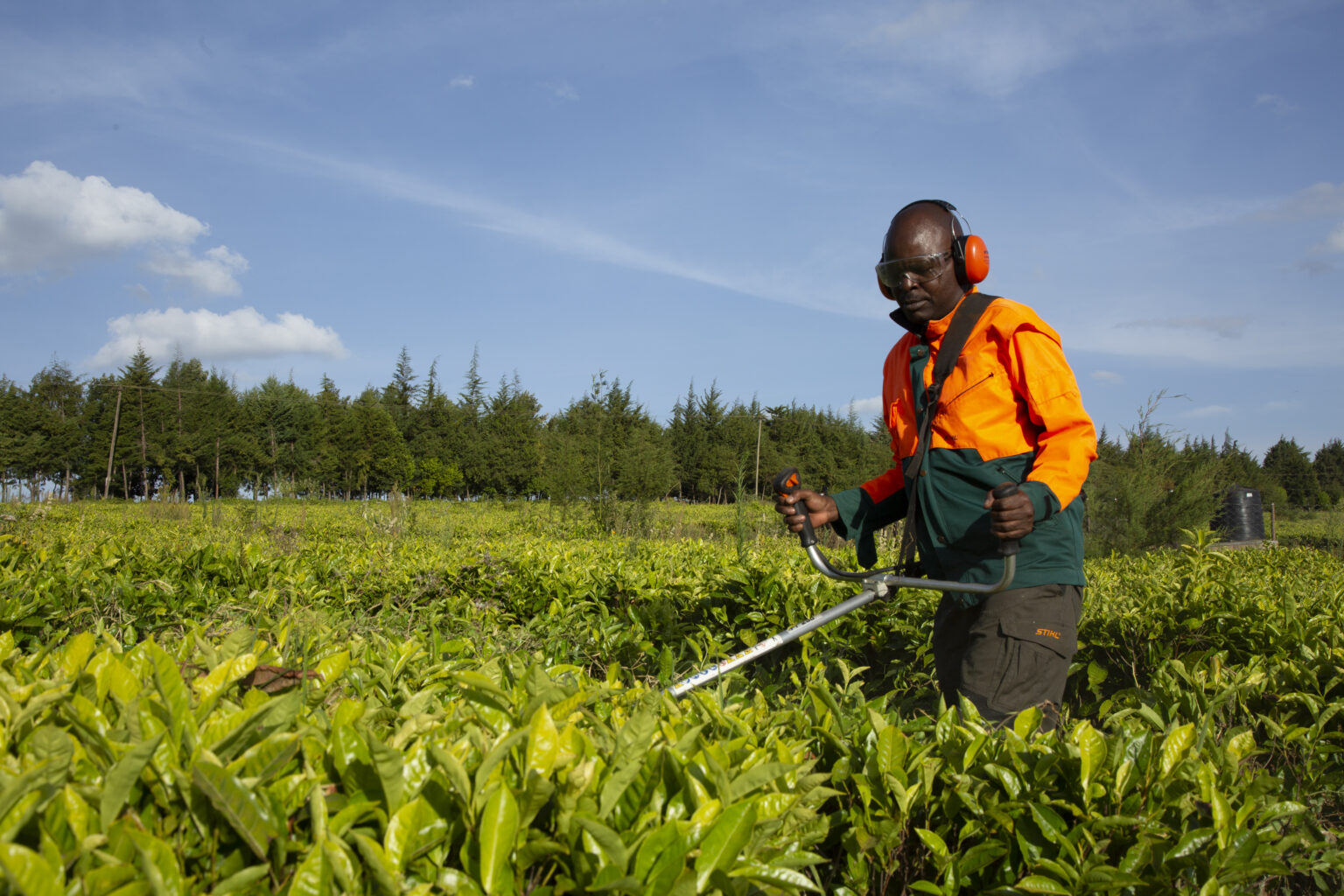- STIHL East Africa has launched a tree pruning device in the East African market, as the firm seeks to increase Agriculture Mechanisation in the region.
- STIHL East Africa Sales Manager John Wachira says the move is aimed at increasing productivity and quality of tea in the market as the region is among the largest tea producers in the world.
- Kenya is the third largest tea producer in the world and holds the leading spot in global tea exports followed by Uganda, Malawi, Rwanda, Tanzania, and Zimbabwe, which all contribute importantly to global trade.
STIHL East Africa has launched a tree pruning device in the East African market, as the firm seeks to increase Agriculture Mechanization in the region.
Sales Manager John Wachira says the move is aimed at increasing productivity and quality of tea in the market as the region is among the largest tea producers in the world.
Kenya is the third largest tea producer in the world and holds the leading spot in global tea exports followed by Uganda, Malawi, Rwanda, Tanzania, and Zimbabwe, which all contribute importantly to global trade.
According to Wachira, tea pruning is the most important cultural operation in commercial tea production and has influence on production and quality of the harvested crop.
“The objectives of pruning are to maintain a convenient height of the bush to facilitate plucking operation, check the reproductive growth, stimulate the production of new set of vigorously growing branches, remove the dead, diseased and defunct wood, pest ridden branches for rejuvenating the bushes which have crossed the period of maximum productivity and to maintain the quality of made tea,” he explains.
The pruner dubbed FT 250 has a 5° inclined gear for precise cutting of tea bushes to achieve a flat bed for regeneration and has an engine capacity 40.2 cc with a fuel tank capacity of 750ml.
A single FT 250 can work on a 1 acre area coverage at a minimum of 6.4 hours to 9.6 hours depending on grass type with a full tank running up to 55 minutes. 1 litre of fuel can run up to 60 to 75 minutes, making work easier and less time consuming.
Weighing 6.1 kilograms the device has a 100-tooth scratcher tooth circular saw blade for precisely cutting shrubs up to a stem diameter of 6 cm. It also has a shortened shaft for easy manoeuvrability and access within tea bushes.
It also comes with a harness for comfortable handling and has an anti vibration system to reduce the machine vibrations on the operator so they can work longer.
There are different types of pruning such as formative pruning, maintenance pruning and corrective pruning. Light or top pruning is a maintenance pruning. It is a cut given 4-5 cm above the last prune level (i.e. leaving 4-5 cm new wood) in order to remove the congested top hamper and to renew the shoot system for more vigorous growth. Medium pruning, heavy pruning, rejuvenation pruning are the corrective pruning. Medium pruning is basically a height reduction pruning which needs to be done when the bushes attain an unmanageable height.
“Tea Pruning determines the productivity of tea bushes, Delay of pruning decreases the size and weight of growing tea shoots. Your goal in pruning tea leaves is to give the plant a low, wide framework of branches that will produce many leaves each year. Pruning is essential to direct the tea plant’s energy into leaf production. When you prune, you replace old branches with new, vigorous, leafy branches,” said Lucia Ayanda STIHL East Africa Lead Trainer.
She says the best time to prune a tea plant is when the plant is dormant or when its growth rate is the slowest.
“Those who are planning tea pruning for regeneration purposes can use our commercial chainsaw – MS 382 is perfect for this kind of job, especially in tea estates, the tool has a fuel Tank Capacity 0.68 litres and engine capacity of 72.2 cc and can accommodate a wide range of guide bar lengths 18‘‘, 20‘‘, 25‘‘ & 28‘‘ ,” she added.
The tea sub-sector is the leading foreign exchange earner in Kenya and supports the livelihoods of thousands of Kenya who depend on its cultivation, processing and trading.
Kenya is the world’s leading exporter of black tea by volume. Major export markets for Kenyan tea include Pakistan, Egypt, United Kingdom, Sudan, Tunisia, Libya, Yemen and Russia federation.
